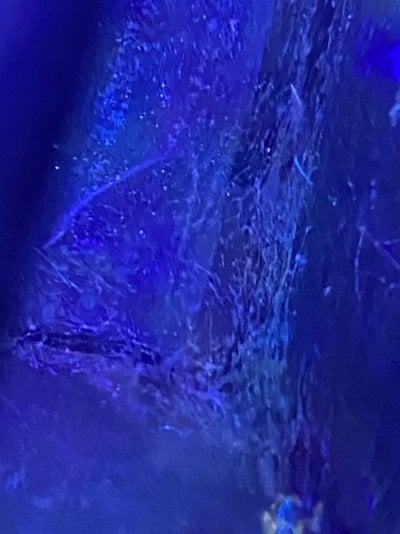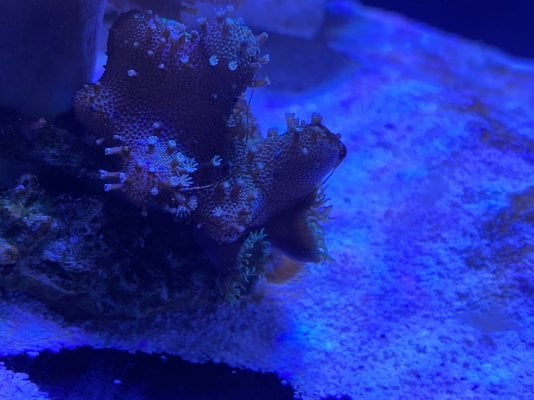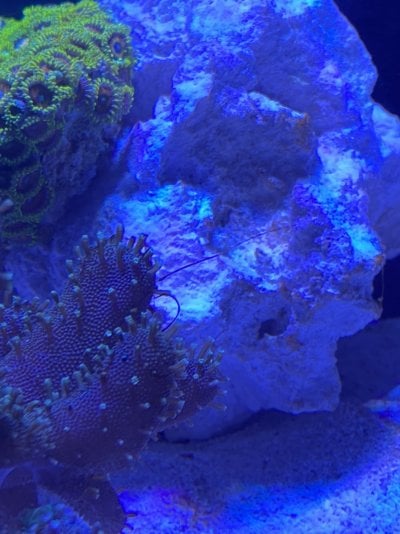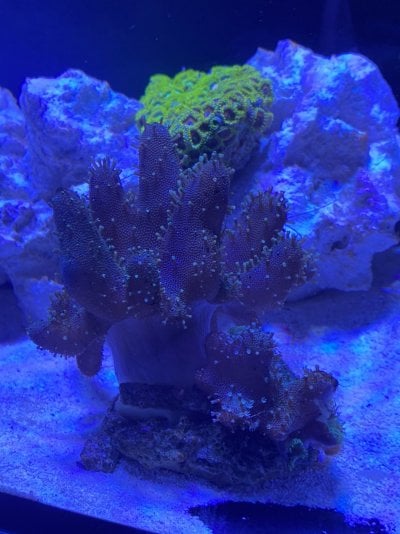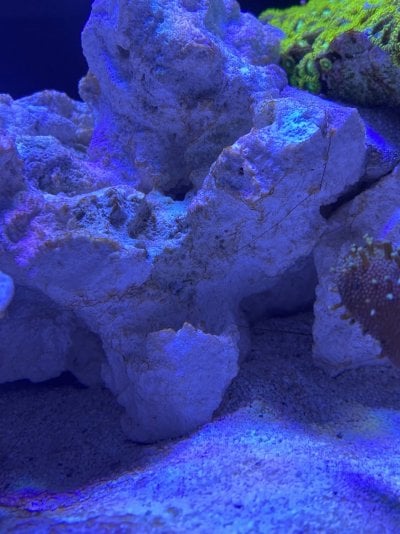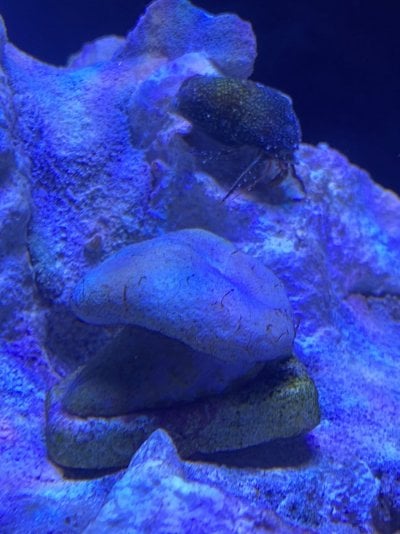Hello, first of all, sorry for the low quality of pictures. If anyone has any idea what this may be (algae, Dino’s, cyano?). A little background, I have had this tank for nearly a year now, about 2 months in, this spider web looking stuff (hard to see in the photos but it is a dark brown/reddish color) started growing on top of my corals and caused many of them to close up and for some of them to die. I have been told it is many different things from hair algae, to Dino’s, to cyano and I have previously tried dosing hydrogen peroxide for a week, and that did not seem to help at all. Daily I use a turkey baster to blow them off the corals and rockwork, but each and every day it has come back. I discovered a few weeks ago that a good amount of it was growing in the back compartment of my All in one where the return pump is, so I made a cover for the back sump area to allow no light to enter back there and I change the filter floss every two days to remove the stuff that I was able to get off the the corals and rocks. i have tried so many things and nothing seems to work. If anyone has any ideas it would be greatly appreciated!
